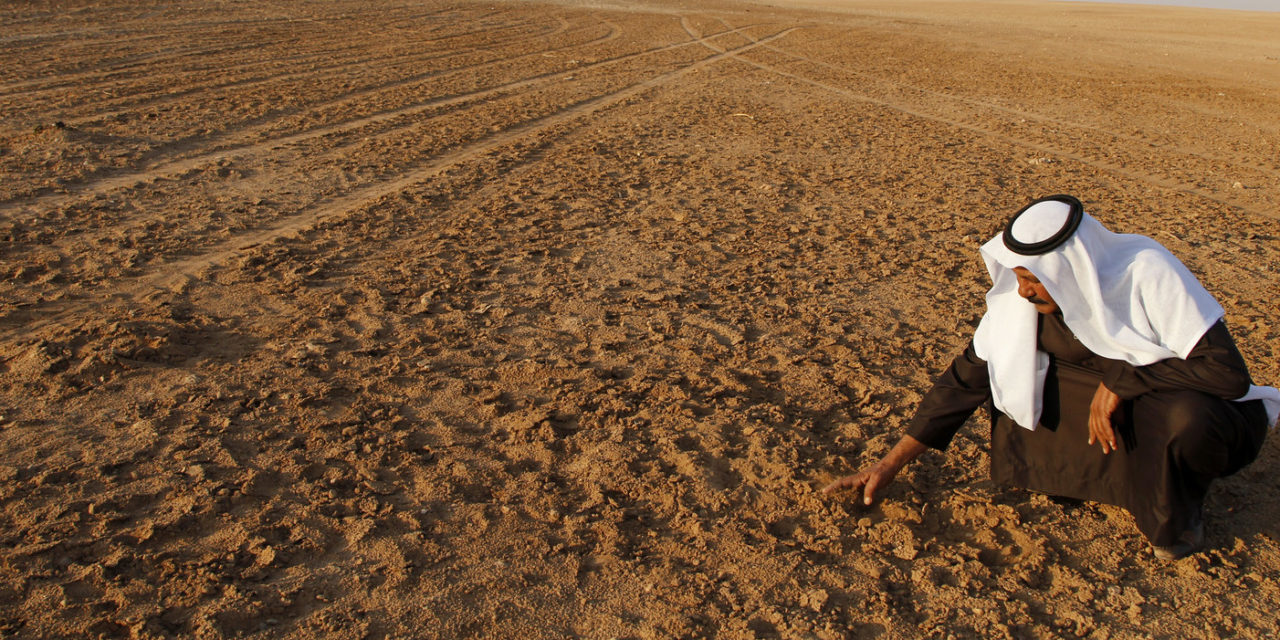The UN’s World Food Program has issued a 92-page special report on “Crop and Food Security” in Syria. It is a bleak outlook, adding to the deprivation already suffered by many displaced and besieged Syrians:
Key Findings
The economic situation in the Syrian Arab Republic further deteriorated over the past 12 months. Gross Domestic Product, which contracted by 5.3 percent in 2015, is forecast to further decline by 3.3 percent in 2016. Inflation in 2015 surged to about 38 percent reflecting general shortages and cuts in the subsidies of fuel and some food products. The Syrian Pound continued to depreciate: between January and mid-August 2016, the value of the Syrian Pound declined from 395 to 530
per USD.
The area planted with cereals in the 2015/16 cropping season is the smallest on record: an estimated 900 000 hectares were planted with wheat compared to 1.5 million hectares planted before the crisis.
Wheat production is estimated at 1.5 million tonnes, 55 percent less than the pre-conflict average of 3.4 million tonnes (2007-2011). Production of barley, a more resistant crop under adverse weather and input conditions reached 877 000 tonnes, above the average of the last ten years.
Precipitation during the cropping season was inconsistent across the country: while the main growing area of Hasakeh in the east of the country received above average rainfall, Aleppo, Idlib and Homs governorates received below average precipitation and large patches of cropland were affected by drought. The damage to irrigation infrastructures amplified the impact of the erratic rainfall on crop conditions and performance.
In addition, agricultural production continued to be seriously hampered by insecurity that constrained access to fields; destruction, damage, lack of maintenance and spare parts for irrigation infrastructures and machinery; and expensive and insufficiently available inputs including fuel, seeds, and fertilizers. However, vast differences exist among the governorates, indicating possible opportunities to intensify crop support in areas relatively accessible.
There is an estimated shortfall of about 838 000 tonnes in the country’s national wheat requirement of 3.854 million tonnes taking into account commercial imports.
The livestock sector, once important in the Syrian Arab Republic’s domestic economy and in its external trade, has suffered very substantially since 2011 with reductions in terms of herd and flock numbers of over 30 percent for cattle and over 40 percent for sheep and goats, while poultry, the usual main and most affordable source of protein of animal origin, has shrunk by 60 percent mostly due to unavailability of poultry feed at affordable cost.
Pasture availability and access have been affected by the lack of precipitation and widespread insecurity. Livestock feed has become increasingly expensive, particularly in the areas with high concentration of internally displaced persons who moved with their herds.
The country’s veterinary service is rapidly running out of veterinary vaccines and routine drugs, with the number of unreliable veterinary drugs sold on the open market increasing during the last year.
No major plant or animal disease outbreaks were reported in the neighbouring region despite limited plant protection products available in the markets and disruptions in veterinary services.
Transportation bottlenecks and fragmented markets prevail. Producers, transporters and traders are facing extremely high transaction costs and security risks. The flows of wheat surpluses from the north east to the food deficit areas of the west did not increase compared to last year. Unsold wheat stocks are accumulating in the north east, while the west largely relies on imports.
After a sustained increasing trend which started in early 2015, prices of wheat flour declined in several key markets by 12-15 percent in June 2016 due to newly harvested crops or food assistance airdrops in some besieged areas that increased supplies and also a temporary stabilization of exchange rate and general inflation. However, wheat prices in June were still between 40 and 50 percent higher than 12 months earlier.
As a result of the reduction in livestock numbers, prices of livestock increased sharply. Prices of cattle, sheep, goats and chicken approximately doubled between 2015 and 2016 in markets located in both government controlled and rebel controlled areas.
Over the last 12 months, prices of agricultural and livestock products increased, but as the upward pressure of tight supplies was partly offset by the low purchasing power, which depressed demand, prices of final products increased at slower rates compared to prices of productive inputs, which soared due to the economic sanctions, market disruptions and the declining value of the Syrian Pound. As a result, farmers have incurred heavy losses.
The resilience of farmers has been heavily compromised after five years of conflict and fighting, and many may abandon food production, with potential grave consequences on the food availability at national level and on the food security of farming households and beyond. As a result, an urgent and strong support to farmers through the provision of critical inputs and the rehabilitation of irrigation infrastructures is required.
Main Photo: Khaled al-Hariri/Reuters

